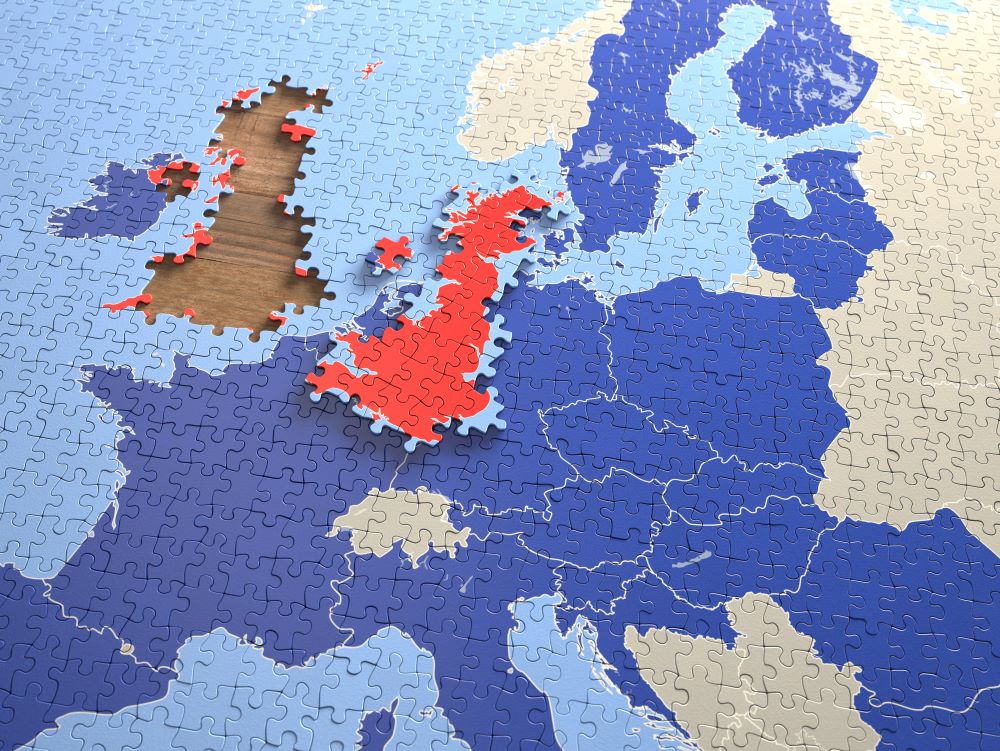
The UK is to slash tariffs on a wide range of goods when it leaves the EU at the end of the year.
The levies would apply to trade between the UK and any country or bloc with which it does not have a trade agreement after the transition period ends on 31 December 2020.
The plan, called the UK Global Tariff and published this morning (Tuesday, 19 May), is what government is calling a “straightforward approach” to cutting red tape.
It promises to reduce costs for thousands of “everyday products” including dishwashers, paints and Christmas trees.
Key points
- To boost UK manufacturing, the government will remove tariffs on £30 billion-worth of supply chain imports including copper alloy tubes, screws and bolts.
- Duties on ‘green imports’, including renewable energy items like LED lights and thermostats, will also be cut.
- Tariffs will be imposed on goods imported into the UK from Europe that are also produced in the UK and which the government wishes to protect, in particular agriculture and automotive. The plan is to impose a 10% levy on cars, as well as putting tariffs on beef, butter and poultry.
Replacing EU tariffs
The new UK Global Tariffs also aims to do away with some current EU tariffs.
- There will be 0% tariffs for imports entering UK supply chains for use in UK production
- This includes copper alloy tubes (down from the EU tariff of 5.2%) and screws and bolts (down from 3.7%)
- EU tariffs currently in place for a wide range of consumer goods will have zero tariffs, including:
- dishwashers (down from 2.7%)
- freezers (down from 2.5%)
- sanitary products and tampons (down from 6.3%)
- paints (down from 6.5%)
- Christmas trees (down from 2.5%)
- Tariffs will be reduced to zero for ‘green imports’ including thermostats (down from 2.1%), vacuum flasks (down from 6.7%), LED lamps (down from 3.7%) and bike inner tubes (down from 4%)
- Almost all pharmaceuticals and most medical devices (including ventilators) will be tariff free
The UK is currently abiding by EU Customs Union rules until the transition period end.
‘Sustainable engine for economy’
The UK Global Tariff was revealed today following a public consultation earlier this year.
Responding to the announcement this morning, Marco Forgione, director general of the Institute of Export & International Trade, said he was happy to see several of the ideas raised by Institute members included.
“I am pleased that on the principles of a liberalised Global Tariffs regime and the ambition to use the Global Tariff to encourage sustainable trade the government has made significant progress,” he said.
“I welcome the government’s move on most of the specific areas we raised on behalf of our members, where tariffs have either been liberalised or simplified.
“This new tariff regime is evidence of the government’s intention to focus on international trade as the mechanism to reshape the UK economy and the engine of its recovery.”
He added the new UK Global Tariff regimes was “further evidence that the government is determined to end the transition period on 31 December 2020.
“Businesses need to use this time to make sure they are preparing and prepared to trade with the EU and the world under different terms.”
Liberalised
Announcing its new tariff schedule for when it leaves the EU’s Common External Tariff at the end of the year, government said 60% of trade will now come in tariff-free.
At present, while still operating under EU trade rules during the transition period, 47% of goods are imported tariff-free.
Secretary of State for International Trade, Liz Truss, said: “Our new Global Tariff will benefit UK consumers and households by cutting red tape and reducing the cost of thousands of everyday products.”



